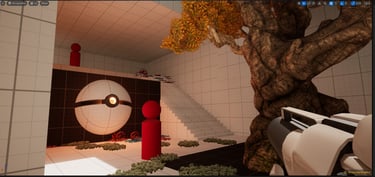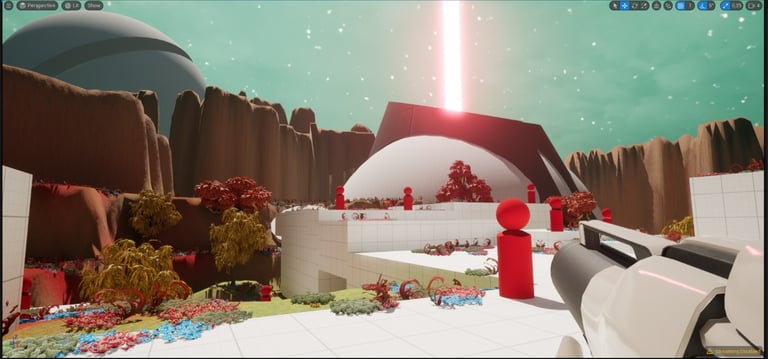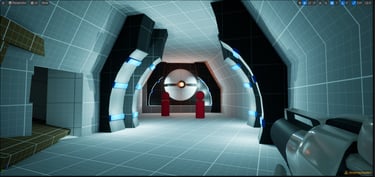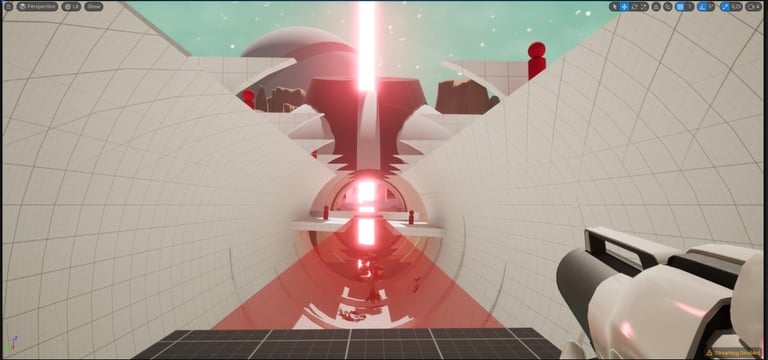Energy Core Shooting

What is the purpose of this level?
Guide the player from the opening vista to the energy core using clear visual and spatial cues.
Deliver gameplay that challenges player's combat, navigation, and spatial awareness skills.
Showcase strong composition, blockout, pacing, and flow design abilities.
LAYOUT
This personal project is an exploration of first-person shooter design, taking strong inspiration from Destiny 2. I began by researching titles like Halo, Destiny 2, and Titanfall 2 to better understand their defining features. The aspects that stood out most to me were the seamless flow of their levels and the sense of wonder and engagement created by their environments.
The goal of this level is for the player to fight their way through the map to reach and deactivate an energy core within a power plant. With that objective in mind, I structured the level by first defining the key spaces I wanted to include and how they would connect to one another. The diagram below is a Node Diagram that represents these relationships—it doesn’t depict the spaces themselves, but rather how they are visually or spatially linked.


While most FPS levels follow a linear flow, many great examples introduce moments where the player must backtrack, creating a sense of familiarity and tension. I wanted to capture that feeling in my design. The player begins at the spawn point and advances toward the main goal: reaching the control room of the Power Generation Center.
Through several sketches and iterations, I refined the layout and defined how each space connects. The final structure divides the map into three main sections:
Spawn Section – establishes the first impression and sets the tone of the level.
Section 1: City Section – guides the player through the remnants of an ancient city, blending exploration with combat encounters.
Section 2: Power Generation Center – leads the player deeper into the facility, through partially collapsed ruins, toward the Power Core.
Each area is linked by transition spaces—mostly bridges—that create smooth pacing while emphasizing verticality and visual progression throughout the level.
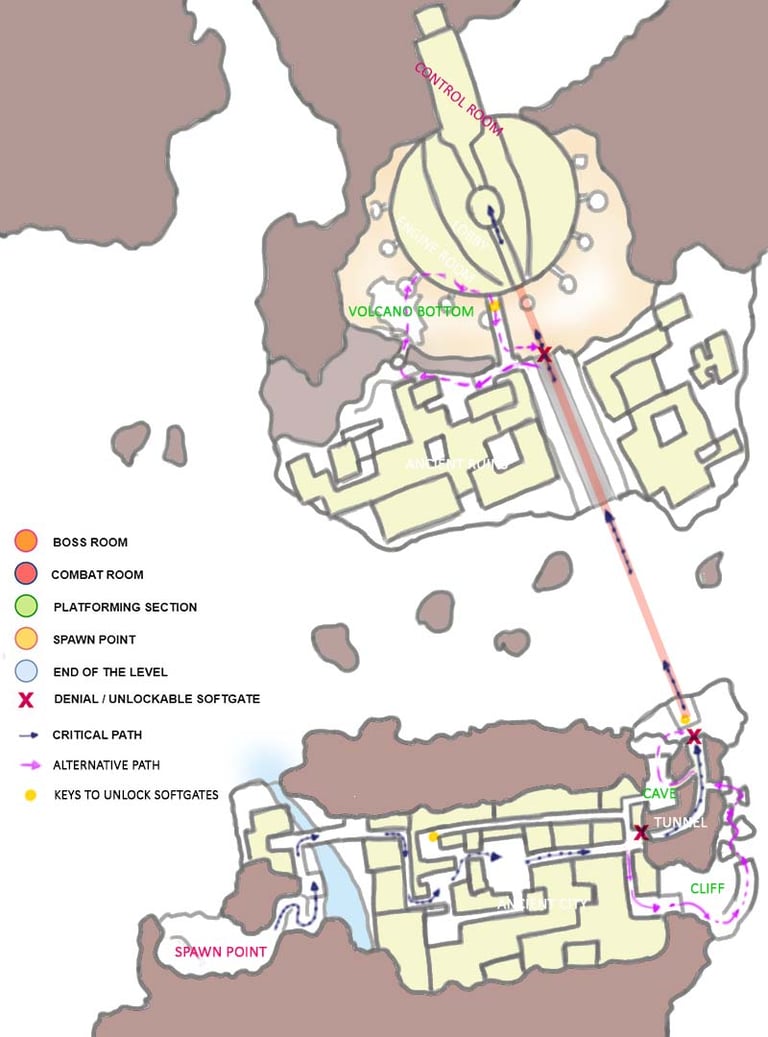

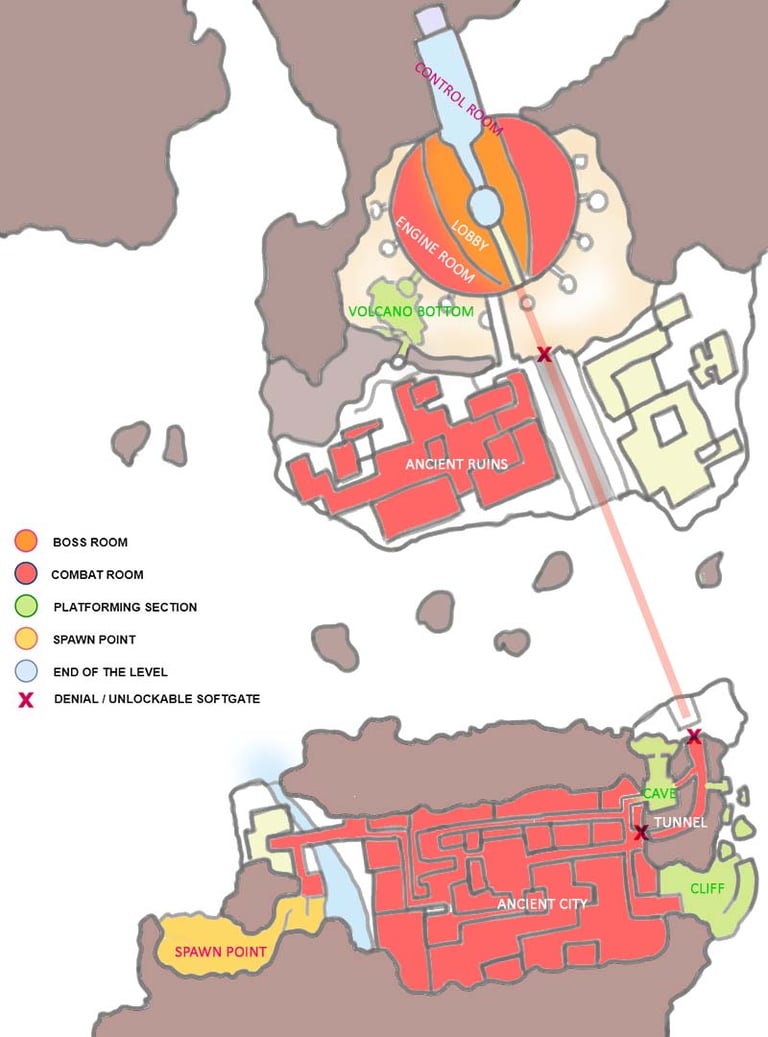

In designing the level, I considered platforming, combat, and puzzle areas as integral parts of the environment rather than separate or isolated sections. My goal was to maintain a cohesive flow throughout the entire experience.
This approach is especially important for the puzzle elements, which require players to explore the environment and revisit certain zones to progress. Similarly, combat encounters are distributed across the map, encouraging movement and engagement throughout the level instead of confining action to specific arenas.




For the platforming sections, I kept the mechanics simple, using only the default jumping functionality provided by the UE5 First Person template. The platforming sequences were designed around that limitation, while also considering how they could adapt to additional movement mechanics such as grappling hooks or climbing in future iterations.
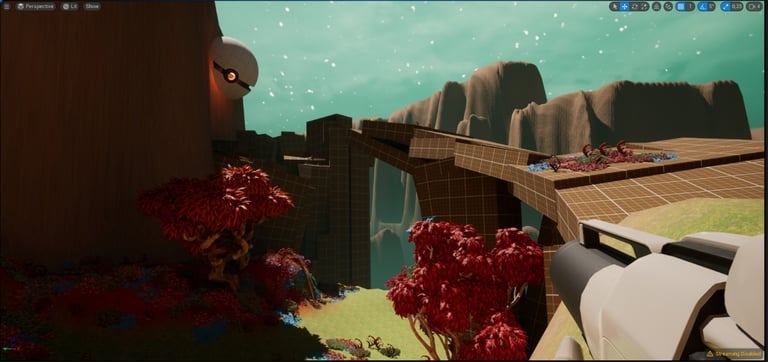

Although combat takes place throughout the entire level, certain areas are designed as key combat zones, as shown in the images below. These spaces feature significant height variations that provide tactical advantages—either to the player or to the enemies—along with cover objects and open areas that encourage dynamic engagements and movement during battles.
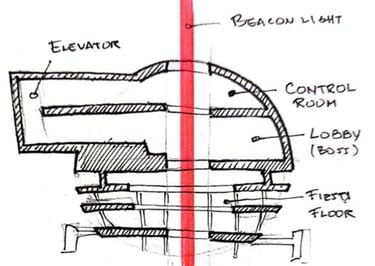


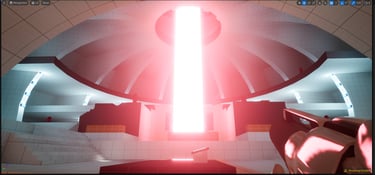
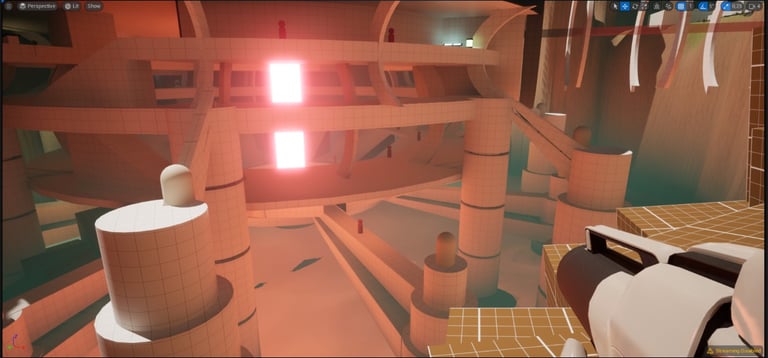

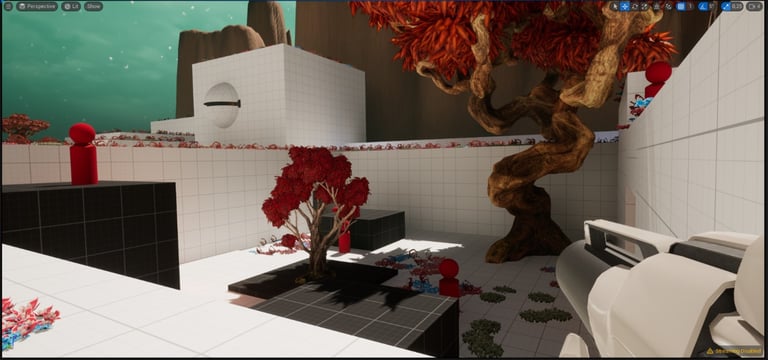

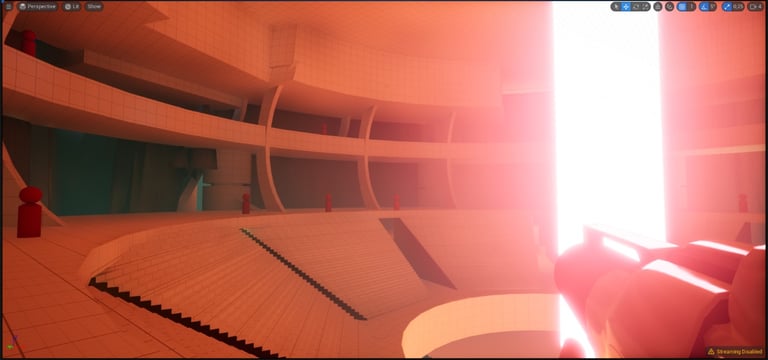

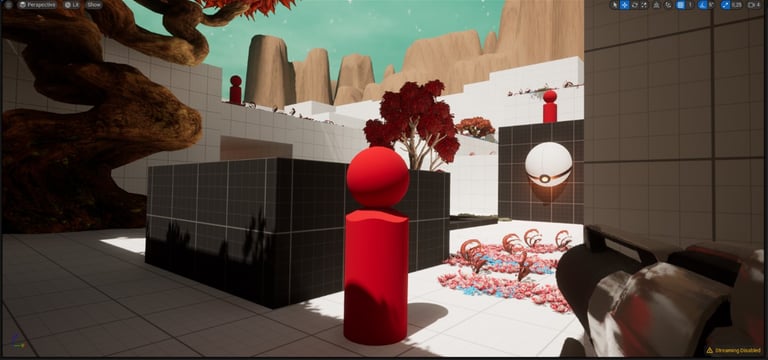

COMPOSITION
Another key element I relied on was composition—including color, perspective, depth of field, lighting, and object placement—to convey spatial relationships and subtly guide the player’s movement. As shown in the images below, the use of perspective and strategically positioned elements helps players intuitively understand where to go, encouraging organic exploration.
Composition also played an important role in creating visual variety and maintaining player interest across different environments. In this level, I placed a strong light beacon to serve as a landmark and navigation cue, visible from multiple areas of the map, including the Power Generation Center shown in image 7.1.
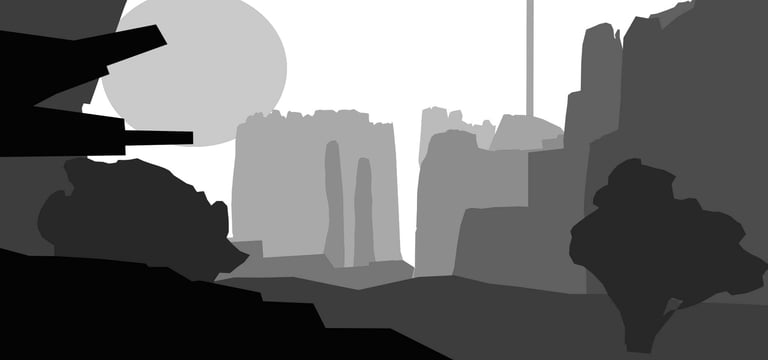

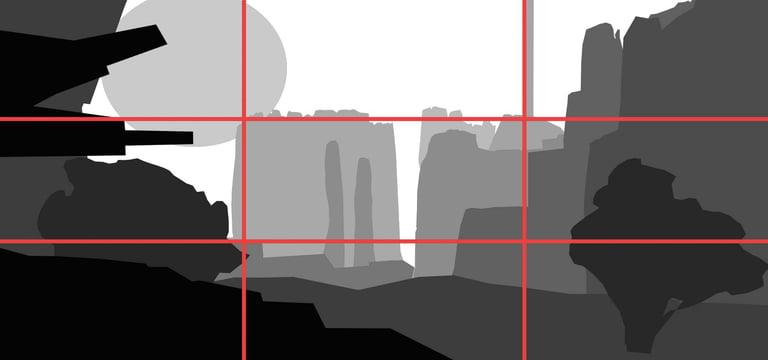

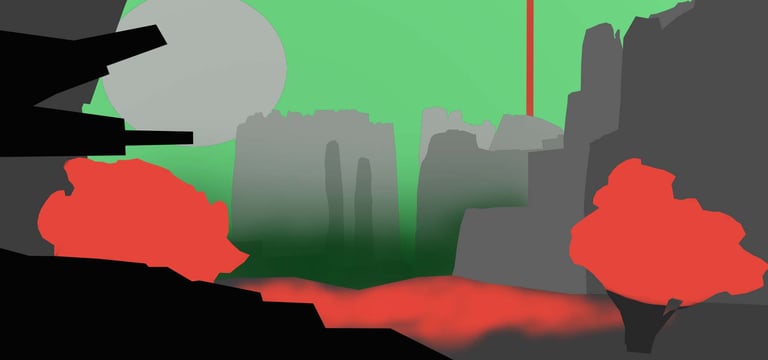

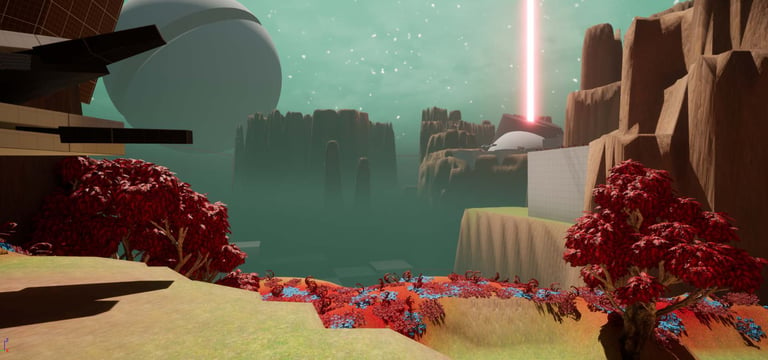

PACING
When designing the flow and pacing of the level, I focused on two main aspects: the types of spaces—closely tied to their size—and the relationships between them. By alternating between different spatial types (narrow, intimate, open, or expansive), it’s possible to create a natural sense of progression.
However, the most important element is how these spaces connect to one another. There must be a logical sequence so that movement through the level feels coherent and intentional. Establishing these relationships early in the design process helps make the spaces feel organic and keeps the player engaged throughout the experience.

